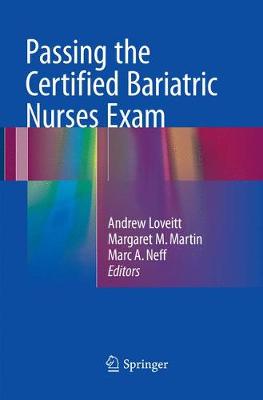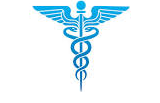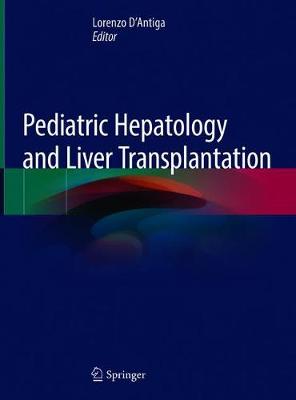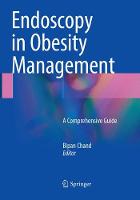Passing the Certified Bariatric Nurses Exam
 -15%
portes grátis
-15%
portes grátis
Passing the Certified Bariatric Nurses Exam
Loveitt, Andrew; Neff, Marc A.; Martin, Margaret M.
Springer International Publishing AG
07/2018
169
Mole
Inglês
9783319824109
15 a 20 dias
454
Chapter 1. Introduction - Andrew Loveitt a. Obesity stats, Declared disease by AMA in 2013, Comment on American Society of Baraiatric Surgeons, Bariatric Surgeons associationb. Why the Certified Bariatric Nurse is necessaryc. Nuts and Bolts of Exam
Chapter 2. Domain 1 - Clinical Management 64% of test materiala. Why we treat obesity - Obesity stats, risks and contribution to of chronic illnesses, cost to society - Eve Bruneaub. Are you a candidate for weight loss surgery: criteria and contraindications - Eve Bruneauc. Basic Anatomy and physiology of gastrointestinal system- simplified - Eve Bruneaud. Pre-op Eval and commorbidities related to obesity -General considerations - William Stembridge i. Pulmonary evaluation including OSA, OHS ii. Cardiac iii. Diabetic e. Restrictive vs malabsorptive options for weight loss surgery - William Stembridgef. Historical Weight loss procedures and common complications from them - William Stembridgeg. The Lap Band - Nidhi Khanna i. General overview of procedure and technique ii. Pros and cons of the procedure iii. Early and late complications iv. Surgical follow-up required v. Nutritional follow-up required h. The Lap Sleeve - Andrew Loveitt i. General overview of procedure and technique ii. Pros and cons of the procedure iii. Early and late complications iv. Surgical follow-up required v. Nutritional follow-up requiredi. The RNYGB - Roshin Thomas i. General overview of procedure and technique ii. Pros and cons of the procedure iii. Early and late complications iv. Surgical follow-up required v. Nutritional follow-up required j. The Biliopancreatic Diversion - Marc A. Neff i. General overview of procedure and technique ii. Pros and cons of the procedure iii. Early and late complications iv. Surgical follow-up required v. Nutritional follow-up requiredk. Medical Strategies for weight loss including weight loss drugs - Roshin Thomasl. Anesthesia in the bariatric patient - Elton Taylor i. Positioning ii. Airway iii. IV Accessm. Special Equipment for the bariatric patient - Lisa Harasymczuk i. OR Beds/Padding ii. Inpatient beds iii. Wheelchairs/transport n. General post-op issues i. urinary retention, SOB, pain control, low UOPo. Skin integrity and skin carep. Complications: Leak - Tatyana Faynbergq. Complications: DVT - Tatyana Faynbergr. Complications: PE - Tatyana Faynbergs. Complications: Obstruction/Internal hernia/Efferent and Afferent limb syndrome - Tatyana Faynbergt. Complications: Dehydration- Tatyana Faynbergu. NGT placement in the post-op patientv. Pharmacologic considerations in obese patientsw. Nutrition - Dr. Neff's RDs i. Basics of nutrition ii. Pre-op considerations iii. Nutritional follow-up iv. Phases of dietary progression v. Specific vitamin deficiencies- presentation, diagnosis and treatmentx. Considerations for Adolescent and Geriatric patients
Chapter 3. Domain 2- Multidisciplinary Team Collaboration 16%a. Team building - AIDET, ECHO - Judy Ketterman Strat b. Psychological disorders and psychosocial implications in relation to morbid obesity and bariatric surgeryc. Modalities to improve patient complianced. Role of support groups
Chapter 4. Domain 3- Outreach 6%
Chapter< 5. Domain 4- Program Administration 14%
Chapter 6. Preparing for the test/test strategy/night before the test
Chapter 1. Introduction - Andrew Loveitt a. Obesity stats, Declared disease by AMA in 2013, Comment on American Society of Baraiatric Surgeons, Bariatric Surgeons associationb. Why the Certified Bariatric Nurse is necessaryc. Nuts and Bolts of Exam
Chapter 2. Domain 1 - Clinical Management 64% of test materiala. Why we treat obesity - Obesity stats, risks and contribution to of chronic illnesses, cost to society - Eve Bruneaub. Are you a candidate for weight loss surgery: criteria and contraindications - Eve Bruneauc. Basic Anatomy and physiology of gastrointestinal system- simplified - Eve Bruneaud. Pre-op Eval and commorbidities related to obesity -General considerations - William Stembridge i. Pulmonary evaluation including OSA, OHS ii. Cardiac iii. Diabetic e. Restrictive vs malabsorptive options for weight loss surgery - William Stembridgef. Historical Weight loss procedures and common complications from them - William Stembridgeg. The Lap Band - Nidhi Khanna i. General overview of procedure and technique ii. Pros and cons of the procedure iii. Early and late complications iv. Surgical follow-up required v. Nutritional follow-up required h. The Lap Sleeve - Andrew Loveitt i. General overview of procedure and technique ii. Pros and cons of the procedure iii. Early and late complications iv. Surgical follow-up required v. Nutritional follow-up requiredi. The RNYGB - Roshin Thomas i. General overview of procedure and technique ii. Pros and cons of the procedure iii. Early and late complications iv. Surgical follow-up required v. Nutritional follow-up required j. The Biliopancreatic Diversion - Marc A. Neff i. General overview of procedure and technique ii. Pros and cons of the procedure iii. Early and late complications iv. Surgical follow-up required v. Nutritional follow-up requiredk. Medical Strategies for weight loss including weight loss drugs - Roshin Thomasl. Anesthesia in the bariatric patient - Elton Taylor i. Positioning ii. Airway iii. IV Accessm. Special Equipment for the bariatric patient - Lisa Harasymczuk i. OR Beds/Padding ii. Inpatient beds iii. Wheelchairs/transport n. General post-op issues i. urinary retention, SOB, pain control, low UOPo. Skin integrity and skin carep. Complications: Leak - Tatyana Faynbergq. Complications: DVT - Tatyana Faynbergr. Complications: PE - Tatyana Faynbergs. Complications: Obstruction/Internal hernia/Efferent and Afferent limb syndrome - Tatyana Faynbergt. Complications: Dehydration- Tatyana Faynbergu. NGT placement in the post-op patientv. Pharmacologic considerations in obese patientsw. Nutrition - Dr. Neff's RDs i. Basics of nutrition ii. Pre-op considerations iii. Nutritional follow-up iv. Phases of dietary progression v. Specific vitamin deficiencies- presentation, diagnosis and treatmentx. Considerations for Adolescent and Geriatric patients
Chapter 3. Domain 2- Multidisciplinary Team Collaboration 16%a. Team building - AIDET, ECHO - Judy Ketterman Strat b. Psychological disorders and psychosocial implications in relation to morbid obesity and bariatric surgeryc. Modalities to improve patient complianced. Role of support groups
Chapter 4. Domain 3- Outreach 6%
Chapter< 5. Domain 4- Program Administration 14%
Chapter 6. Preparing for the test/test strategy/night before the test













